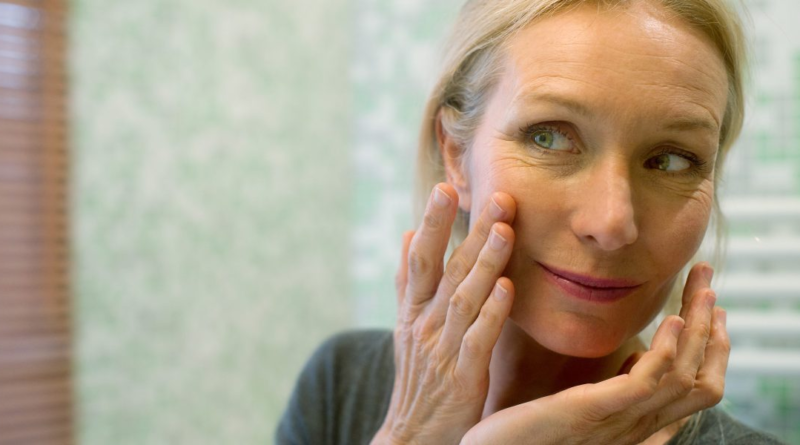It's natural for skin to thin with age. Here's how dermatologists say you should care for yours
While aging signs like wrinkles and varicose veins are well-known, skin thinning—a natural progression in which your epidermis becomes fragile—gets discussed far less often. While this skin condition happens naturally with time, particularly for people of lighter skin tones, its effects can be painful and stigmatizing.
Signs of skin thinning
Thinning results in the skin becoming more transparent and more delicate, almost like tissue paper. “You may notice bruising more easily as a result of collagen loss around blood vessels,” explains medical and cosmetic dermatologist Dr. Azadeh Shirazi. “This is particularly evident on the backs of the hands and forearms, a condition called actinic purpura.”
Because your skin is literally thinner, it can also tear more easily if you run into something sharp, or scratch yourself with long fingernails, adds dermatologist Dr. Aanand Geria, of Geria Dermatology in New Jersey. “If you have thin skin and you’re prone to getting tears, then you are at risk for getting infections,” he says. “And the older you are, the less well your body fights off infections and you could be in serious trouble.”
Beyond the physical effects of skin thinning, the appearance of this skin condition can also affect mental well-being. “People are embarrassed because they have black and blues all over their arms. These are people who are typically used to wearing skirts and short sleeve shorts, and now they feel embarrassed to wear that stuff,” says Geria, adding that many of his older patients feel this way despite the fact that skin thinning is a normal part of aging.
Common causes of skin thinning
Skin thinning happens primarily because of a loss of two essential skin proteins, collagen and elastin, explains Geria. Collagen provides structure and support to the skin, while elastin provides elasticity. For example, people at younger ages who pull their skin away from their body will see it snap back into shape quickly. However, over time, as your elastin levels drop, it will take the skin longer to bounce back. “That loss of elastin is largely sun-induced, but also—to a certain degree—has to due to chronological aging,” says Geria.
Loss of elastin and collagen is primarily due to U.V. radiation, or frequent exposure to the sun without protection in the form of sunscreen, hats, or long-sleeve shirts. “We tend to see [skin thinning] moreso in the areas that have been exposed to sun. For example, you’ll see thin skin on the top of your hands and the top of your forearms, more so than you would see on your belly,” explains Geria.
Apart from exposure to the sun, your genetics and the amount of melanin in your skin will also influence skin thinning. “Melanin, to a certain degree, does act like a low-grade skin protectant,” explains Geria. “So when we see thinning of the skin, that is particularly affecting people who have lighter skin. They don’t have that melanin that protects them from the sun rays.”
What you can do to slow skin thinning
Both Geria and Shirazi agree that limiting exposure to sunlight—and wearing proper sun protection when you do go outside—is the number one way to care for your skin at every stage of life. “Limiting sun exposure and practicing sun protection is one of the most important ways to preserve the quality of your skin,” says Shirazi. Make sure you’re wearing SPF daily (even if you’re working inside), sporting a hat, and limiting your exposure to sunlight.
Lifestyle factors—such as diet and exercise—may also improve the health of your body’s largest organ. “Scientists believe that when you exercise, muscles release myokines, IL-15 specifically, that may have an anti-aging effect on the skin,” says Shirazi. “Exercise also enhances blood flow and oxygen to the skin, and when you sweat, your pores expel oil and dirt, leaving you with a healthy workout glow.” Even moderate exercise can positively affect the health of your skin.
How to care for thin skin
If you’re already experiencing thinning skin, it’s still important to wear sunscreen and hats and limit your exposure to sunlight to prevent your skin from becoming even more delicate.
You should also be mindful of how you dress. “Your risk of getting tears in your skin is more likely if you’re wearing short sleeve shirts and shorts. So if you wear items that cover your skin, you’re gonna get that extra layer of protection so that if you run into a sharp corner of a table, it’s not going to tear a chunk of your skin out,” says Geria. You should also consider keeping your nails short, so they can’t catch in your skin.
From a skin-care standpoint, Shirazi has a few recommendations that will help strengthen your skin barrier. “Using retinol-based creams help stimulate the production of collagen and hyaluronic acid, preserve the breakdown of viral skin structures, and boost circulation,” she says. Shirazi also recommends trying products that contain a vitamin C, which plays a role in collagen synthesis, as well as products with CoQ10, an antioxidant that “positively influences the age-related cellular metabolism,” she says.
You may also consider visiting a dermatologist or a cosmetic dermatologist who can make specific recommendations based on where your skin shows the most signs of thinning. For example, a skin specialist may recommend fillers that have a bio-stimulative effects that stimulate collagen production in targeted areas such as the chest, neck, and arms, Geria explains.
While you’re dealing with your thinning skin, also keep in mind that you’re not alone. No matter how well you’ve protected yourself from sun damage and taken care of your body, this part of aging is almost universal—and countless other people are going through the same experience.

